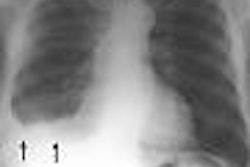Opening a new imaging center is a considerable undertaking. A location needs to be selected, a thorough financial pro forma must be crafted, staff has to be recruited, and technical and support equipment need to be acquired. Marketing the new center can be an equally formidable task, but establishing timelines can make the project much less daunting.
A group will need about six months from the target date of the imaging center opening to execute a successful marketing plan, said Deborah Mourey, director of sales and marketing at IDE Radiology, a subsidiary of Dallas-based imaging services provider Radiologix.
Mourey, along with Marianne Henderson, director of sales and marketing at Pacific Imaging and Valley Radiology in San Francisco, offered their insights on marketing at the 2004 American Healthcare Radiology Administrators (AHRA) meeting in Boston.
Six months and counting
According to Mourey, five objectives need to be met six months before the opening of the center:
- A situation analysis of the local economy and healthcare environment
- A competitive assessment
- A payor assessment
- A differentiation of the center from its competitors
- Marketing objectives
Even if a group has opened a center before in the same or a similar market, a situation analysis is necessary, Mourey noted.
"Don't assume. Check the facts," she said.
A competitive assessment will need to be conducted of both freestanding imaging centers and hospital radiology departments, she advised. This includes tracking all modalities, the hours of operations, and special services offered, as well as assessing the marketing messages and materials of competitors. From this data, a strengths, weaknesses, opportunities, and threats (SWOT) document can be created for the new center.
"Don't make the assumption that a hospital is not a competitor," Mourey cautioned.
A payor assessment should take place as soon as possible. All insurance companies need to be informed of the new center's address, its modalities, and its days and hours of operation. Workmen's compensation, Medicare, and other government insurers also need to be contacted and informed about the new center.
For an established imaging center group, a new center is an opportunity to solicit new insurers, Mourey said. It is also the time to begin negotiating rates with managed care payors.
Differentiating the new center from its competitors in the marketplace requires that a group identify its strengths and focus on what is unique in its operation, such as its staff, radiologists, procedures, hours of operation, location, and payors. In addition, the weaknesses of competitors, identified in the competitive assessment, can be exploited.
Lastly, a group will want to craft its marketing objectives, and identify the key messages that it wants to get out to its community. This entails defining the specific physicians, groups, and specialties the practice will target; the timing of the promotional plan, including media and print collateral; and determining how this will be accomplished, Mourey said.
Five months
Approximately five months before a center's opening, the group will want to set the scope of its launch, Henderson said. The launch plan has five elements:
- A launch-plan template
- Advertising
- Open house
- Media relations
- Print materials
A launch-plan template combines the elements of budget, timeline, and responsibility as a means to manage the marketing project. Once a marketing budget has been set by the group, Henderson recommended that an activity grid spreadsheet be created with a row for a description of each activity, and a column for date assigned, due date, date complete, person responsible, and status.
"It takes approximately six impressions to make branding or a message stick in the mind of a consumer," Henderson noted.
A group will need to determine the type and duration of media it will buy to market its message. Depending on available budget, this could be any combination of radio or television advertising, newspaper or local magazine ads, billboards, or a Web site.
"The bottom line of an open house is volume," Henderson said.
A center can conduct three types of open house: a press/media event; a referring physician opening; and a public open house for the local community. An open house for the press should only be done when the center is complete, and invitations can be mailed along with the press release for the center.
A referring physician open house can be held after working hours, and branded premiums, such as wine glasses or coffee mugs, should be included for the physicians to take with them. Invitations to referring physicians should be hand-delivered and followed up with a phone call, Henderson advised.
An open house for the local community can target beneficiary groups, assisted living centers, and community-service organizations. A center may want to consider offering door prizes to registered attendees as part of a community open house, both to entice attendance and to create a distribution list for further marketing materials.
"The more you involve the local community, the better off you're going to do," she said.
Henderson suggested contacting local radio and television stations, newspapers, and magazines that cover medical news and inviting them to visit the center, especially if the center has a technology or procedure that is new to the area or that has not been covered in the media. Another alternative she suggested for media relations is booking a radiologist on a radio or television talk show to discuss the center's new technologies or procedures.
The process of creating print material, such as physician brochures, referral pads, sell sheets, leave behinds, presentation folders, journal reprints, direct mail pieces, patient brochures, and maps to the center, should be started at this time. The more time a printer can be given to do a job, the better the rate that an imaging center can expect for its printing, Henderson said.
4, 3, 2, 1 ...
Four months before a center opening, a group will want to develop and verify its mailing lists for promotional literature. It will also want to select and order imaging center premiums, such as pens, coffee mugs, notepads, and the like.
The group will also need to identify its referring physician and internal physicians who are most likely to act as champions or evangelists for the new facility. These individuals should be kept well-informed of the status of the imaging center opening. The group will also want to pay close attention to its activity grid to identify any potential problem areas.
At the three-month mark, external signage should be ordered, the print work should be at the printer, Web site updates should be planned for the next 90 days, and premium orders for key referring physicians should be getting prepared, Mourey said.
Two months before the opening, the internal team for the center should be set and its responsibilities determined. An open house luncheon for the imaging center's employees should be considered by the group, especially if the center will be staffed with personnel from other group imaging centers in the area. Print, promotions, and public/media relations items on the activity grid should be close to completion at this time, according to Mourey.
In the final month before the imaging center opening, the Web site should go live. The staff for the center should be in place and should be fully trained. Mailers should be sent out, and the open house events should be scheduled.
"It's like throwing a big wedding -- it's all in the details," Mourey said.
By Jonathan S. Batchelor
AuntMinnie.com staff writer
September 8, 2004
Related Reading
Imaging business plans are all about the money, August 3, 2004
Impactful marketing in healthcare, May 14, 2004
Six Sigma tools improve patient throughput, January 2, 2004
Medical conferences bring market muscle to imaging center technology, November 5, 2002
Imaging center marketing: Don't trade dollars for doughnuts, September 18, 2002
Copyright © 2004 AuntMinnie.com



















